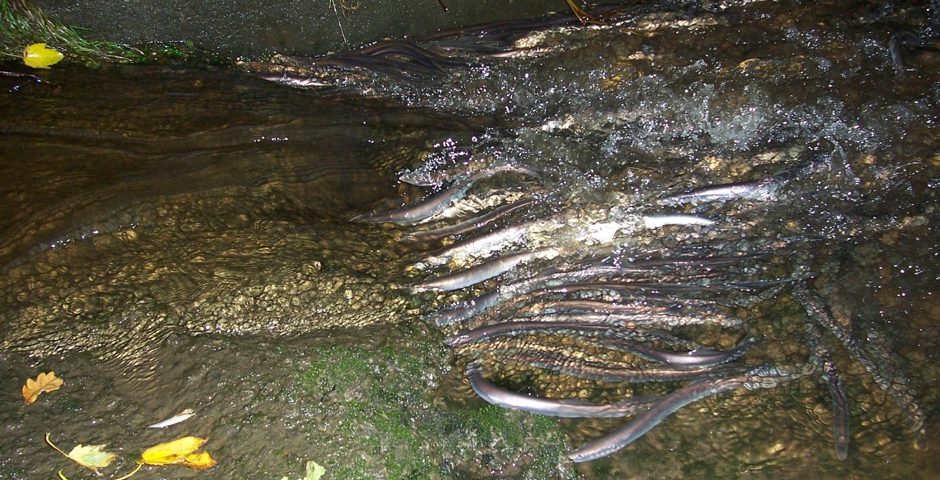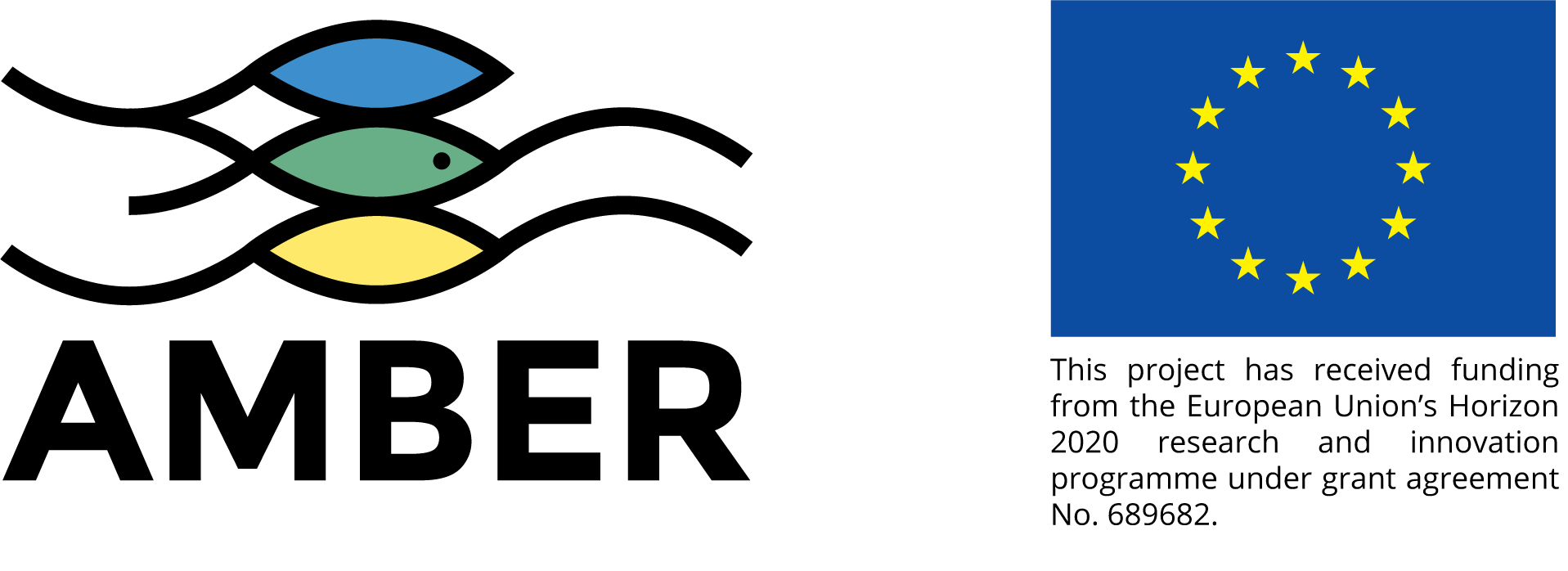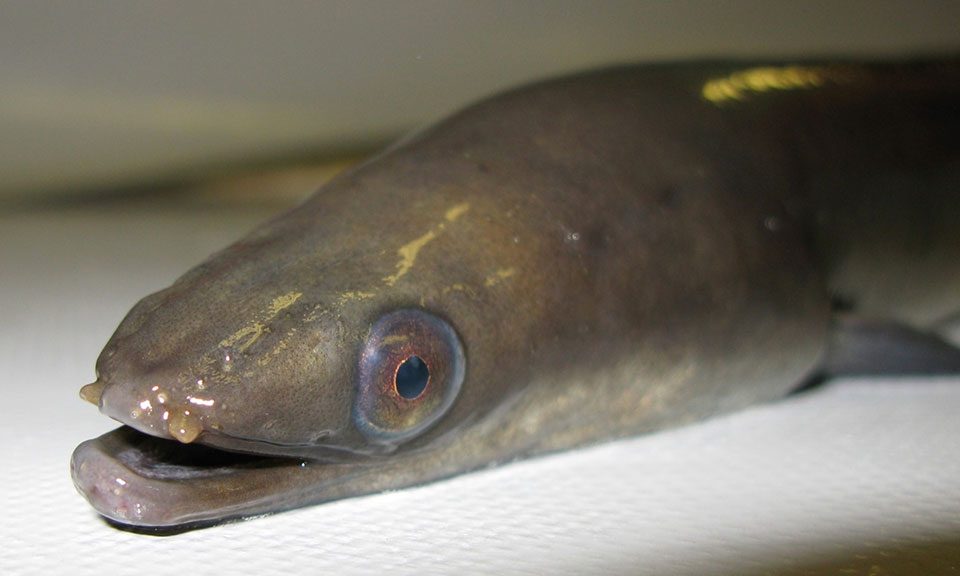Getting past the barriers

Loire-Allier River Case Study
March 1, 2017
Dams on Nalon-Narcea basin
March 1, 2017
Getting past the barriers – how can we measure barrier impacts and passage improvements for fishes? By Martyn Lucas (Durham University)
Adaptive management of river barriers to support natural ecological functioning necessitates an understanding of those processes. This includes determining the degree to which river engineering inhibits natural movements of organisms, what the impacts of altered movement patterns are, and how best to alleviate them. A familiar effect of dams and weirs is on the reduced passage of conspicuous river migrants, such as salmon and eels. However, we are increasingly interested in movements of a much wider range of species, from downstream dispersal and colonisation of water plants to the upstream colonisation capacity of invasive, non-native crayfishes. AMBER is helping develop methods to measure these processes. Yet a key requirement remains in how best to measure the degree of barrier effect that dams and weirs have on native fish movements, and how well mitigations such as fishways or modifications to dam management perform.
Historically, barrier effects were often obtained by observation, since where large migrations of fish occur, river obstacles cause a bottleneck effect, resulting in fish aggregating locally. These aggregations often attract natural predators or fishermen (in some cases acting illegally). Such observations were often the basis for actions to aid fish passage, for example building of fish ladders to facilitate upstream movement, or bypasses to aid downstream movement. The observations of anglers, naturalists and other water users remains a valuable route for informing water managers where obstacles to fish movement remain – the use of smart phones with cameras provides immediate evidence of such aggregations at numerous structures such as road culverts. AMBER is supporting this Citizen Science method. But not all fish and other biota attempting to pass engineered structures are conspicuous and neither is a fish aggregation at a structure always evidence of a barrier effect.
Fish scientists use a variety of survey methods (e.g. traps, nets, electric fishing) to measure the degree to which fish communities and abundance may differ either side of a potential barrier, as a crude measure of local effect. An absence of a species upstream might imply a lack of continuity of movement causing a local depletion upstream, but alternatively it might be a result of altered habitat suitability upstream. Some years ago, and still today in some cases, scientists evaluating a fishway’s performance commonly used a trap at the exit of the fishway to capture fishes passing through. If substantial numbers of the target species were captured exiting the fishway in the direction of expected movement (for example, upstream for prespawning salmon) this was regarded as evidence of effectiveness. A similar approach is still used with fish counters in fishways. Though such measures have their benefits – for example counters enable information to be compared across years and without fish capture or handling – they fail to address the key issue of ‘supply and demand’ for fish; just because some fish successfully pass through a fishway does not mean it is performing well. In-fact none of the methods above enable quantitative measurements of barrier effects or fishway performance.

The upper part of the swim-through PIT antennas are attached to the beams that can be seen across the top of the fishway walls
It is for these reasons that biotelemetry (the use of remote identification systems on animals) has become the preferred method of measuring fish (and other animal) passage at engineered river structures, and for determining the performance of fishways or altered dam management in facilitating passage. Electronic tags, including familiar ‘beeper’ radio tags and Passive Integrated Transponders (PITs, also employed as pet microchips and for many commercial electronic identification applications) enable individual identification remotely. This means it is possible to determine what proportion of fish attempting to pass a dam manage to do so – it gives that crucial information about ‘supply and demand’. But it also tells us about their survival, the routes used for passage, the number of passage attempts made, the time taken and the influence of environmental factors such as the temperature, or the amount of dam spill. This knowledge enables adaptive management at river barriers, by seeking to minimise ecological impacts on natural animal movements, while enabling socio-economic functions of river infrastructure to be retained, and forms part of the AMBER approach.
Such monitoring across Europe is vital, so that we find and adopt the most suitable practices for minimising barrier impacts on aquatic animals. For example, several species of lamprey, jawless fishlike animals of ancient ancestry, are protected in the EU because of their widespread decline, partly due to migration barriers. Recent research at Durham University, UK, has shown that typical technical (concrete and steel) fishways installed at small barriers are good at attracting upstream-migrating river lamprey to pass, but extremely poor in enabling their ascent, with recorded passage efficiencies of 0-5%. By contrast, research in Germany and Finland has suggested that very low-gradient technical, or nature-like passes may be much more effective for this species.
Although biotelemetry is a valuable method for improving fish passage solutions, it has disadvantages. It can be costly (though PIT tags cost just a few €) so relatively few studies are done. Therefore knowledge and data gained across Europe need to be combined. Doing so will maximise the value of each study and enable faster progress in the ecologically sensitive management of river barriers. Yet to do this we need to apply common measurement standards. Currently a European group, led by the Environment Agency, England, is developing an EU standard (‘CEN standard’) for monitoring fishway performance, based on the use of telemetry.

A further issue is that most fish passage studies still concentrate on rather few species including salmon and eel, yet the Water Framework Directive requires the determination of the ecological quality status of fish communities against reference conditions and requires progress towards achieving ‘good’ status. In impacted tributaries, restoring fish communities towards good ecological condition requires native fishes to recolonise habitat from which they were lost due to, for example, past pollution, but small river barriers such as culverts often inhibit recolonization. Many of these fishes are not charismatic migratory species; often they are small, weak swimmers, but their recolonization relies on dispersing past these barriers. A current challenge is to better measure and facilitate the passage needs of these fishes. Meeting WFD objectives for fish in such rivers requires fuller appreciation by managers and stakeholders of the free-movement needs of many small, weakly-mobile species, as well as the charismatic mass-migrating species.
Martyn Lucas is an Associate Professor at Durham University, Department of Biosciences
Follow AMBER on Twitter and Facebook or sign up for the newsletter to stay up to date!



